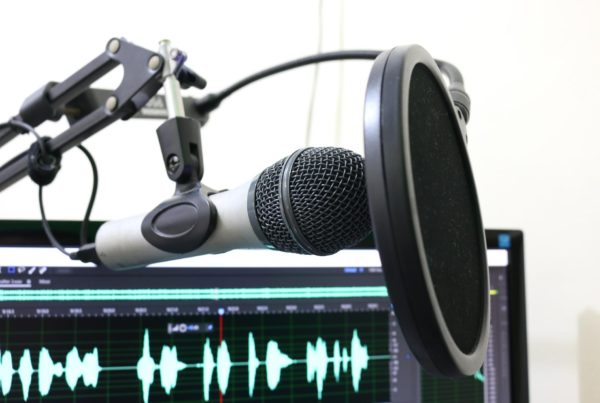Cambridge or IELTS? TOEIC or TOEFL? Let’s learn more about some of the most popular English proficiency exams.
- Today we’re talking about English proficiency exams! Let’s find out more about Cambridge, IELTS, TOEFL, and TOEIC.
- First, try listening without reading the transcript. After that, listen again to check for any words you might’ve missed.
- You’ll also find a quiz at the end!
Transcript:
When it comes to choosing which English proficiency exam to take, things can get quite confusing. There are over a dozen internationally-recognized examinations, and each has its own unique format and scoring system. In today’s episode, we’ll compare some of the most popular exams to find out which might be best for you. Stay tuned.
Feeling stuck and unmotivated? Taking an English exam can help you get past a language plateau!
Before we begin, remember that which exam you should take will be determined by your language goals. All English exams will test your skills in reading, writing, listening, and speaking and can be used to track your progress. However, for the purposes of visas and university admission, you will have to do some research to find which exam is accepted and which scores are required. I’ll be looking at the C1 levels of each exam to give you a general idea of what to expect.
Cambridge Exams
So, let’s get on to the list. We’ll start with the Cambridge exams. These exams are managed by the University of Cambridge English Language Assessment and began in 1913. These exams are commonly known by names such as “A2 Key”, “B2 First”, or “C2 Proficiency”.
The C1 exam starts with the “Reading and Use of English” section, which lasts 1 hour and 30 minutes and consists of 56 questions which include activities like gap-fills, organizing paragraphs, and multiple choice questions.
The next section is writing, which will also take 1 hour and 30 minutes and includes two parts. The first part will be an essay response to another text, such an article. The second part will be a choice between three tasks, either a letter, review, or proposal.
The listening section will be 40 minutes and includes 30 questions based on both long and short recordings of interviews, radio broadcasts, monologues, and other audio material.
Finally, the speaking part will take about 15 minutes and will be face-to-face whether you do the exam on paper or on a computer. Two candidates will be interviewed by two examiners. There are 4 parts to the conversation.– First, a short one-on-one introduction with the examiner. Second, taking turns talking about photographs with your partner. Third, a task or problem that requires you to exchange ideas and negotiate a solution with your partner. And finally, a more detailed discussion of the previous activity with the examiner asking questions.
These exams are widely recognized throughout the world, including both American and British universities. The exam can either be completed on a computer or on paper, except for the speaking portion. You will receive both a number score and the corresponding letter score based on the average of all sections, for example if you score 194 this will be a pass for C1 with a grade of B. This is a pass or fail exam, no certificates will be issued if you do not attain the required score.
IELTS
Another popular choice is the IELTS exam, which stands for International English Language Testing System. This exam began in 1989 and is jointly run by the British Council and Cambridge Assessment English. The exam consists of 4 sections and there is both an academic and general training version of the exam.
The exam will start with a 40-minute listening section, which includes 4 parts where candidates will listen to different conversations about different topics once and then answer a series of questions.
The next part is the 60-minute reading section, which will require candidates to read three articles and answer various questions which include multiple choice, labeling diagrams, short-answer questions, as well as other tasks.
Next is writing, which will also take about 60 minutes. Candidates will be given two tasks in this section. The first is a practical writing task where you must write at least 150 words in 20 minutes, and topics can include things like describing a chart in the academic exam or making a complaint to a hotel in the general exam. The second task requires that you write at least 250 words in 40 minutes and is more personal and can include topics such as writing about your views on smoking or proposing solutions to environmental issues, for example.
The final section of the IELTS is speaking, with a duration of about 11 to 14 minutes. There are three parts to this section. First, you will be asked to introduce yourself. Second, you will be given a card with a task, and you will be asked to prepare a 2-minute talk about it. Finally, the examiner will ask you a series of questions about what you said in the previous section.
IELTS is also a widely-recognized certificate accepted by institutions around the world. Like the Cambridge exams, they can be taken on paper or on a computer. The main difference with the IELTS is the band scoring system. This is not a pass or fail exam, so regardless of how well you do, you will receive a certificate. IELTS scores range from 0 to 9 with 2 to 2.5 being equivalent to A1 and 8.5 to 9 being equivalent to C2 proficiency. Your final score is calculated from the combined average of scores across all 4 sections.
TOEFL
Next up is the TOEFL which stands for Test of English as a Foreign Language which started back in 1962 to help foreign students study in American universities and is run by the Educational Testing Service in the United States. The most common version of this exam is the TOEFL iBT which is the internet-based version of the test which consists of 4 sections to be completed in 3 hours.
The first section is reading, which will ask you to read a series of academic texts similar to what you would be expected to read in a university course. Questions will range from checking understanding and identifying main ideas to filling out tables. This section will take about an hour to finish.
Next is the listening section, which will also take about an hour. Candidates will listen to 2–3 conversations between students and professors and answer 5 questions each, then listen to 3–4 lectures and answer 6 questions each. Each recording is only played one time, and questions will not only test your understanding of what is said, but also the purpose and attitude of the speakers.
The 17-minute speaking section consists of 4 tasks. Task 1 requires you to spontaneously answer questions about everyday topics. Tasks 2, 3, and 4 involve listening to a lecture, conversation, or reading a passage and responding to questions about the information presented to you.
The final 50-minute writing section has two tasks. The first task will ask you to read a text about an academic topic and listen to a discussion about it, and then write a response that summarizes and connects both pieces of information. The second task is to write an opinion essay, where you are expected to defend your position logically.
Like the IELTS, the TOEFL is not a pass or fail exam. TOEFL scores range from 0 to 120, with a score of 30 being close to A1 and 115-120 being C1. As you can see, TOEFL is focused on preparing students for entering English-speaking universities, and everything included in the exam revolves around situations you are likely to encounter when studying abroad.
TOEIC
Last but not least, we have the TOEIC which stands for the Test of English for International Communication which was introduced in the 1970s in Japan. The exam is administered by the American Educational Testing Service. This exam focuses on the candidates’ ability to work in an English-speaking business environment.
The TOEIC is different from the previous exams we have discussed in that there are two separate exams and certificates: The TOEIC Listening and Reading Exam and the TOEIC Speaking And Writing Exam. Each exam will have to be completed separately and each uses a different scoring system.
The listening and reading exam takes 2 hours to complete and consists of 200 multiple-choice questions, with a maximum combined score of 990 for both sections.
The speaking and writing exam consists of a 20-minute speaking section and a 60-minute writing section. Each section can be taken individually and both have a maximum score of 200.
The TOEIC is not a pass or fail exam, as number scores will be given. Each section has a corresponding letter score, for example, scoring over 490 on listening would be equivalent to C1 and scoring over 180 on speaking would also be equivalent to C1. Although the TOEIC is most popular in Japan and South Korea, it is also a globally-recognized certification. For example, it has been accepted by both the Greek government and is a requirement for some French universities. The main difference between the TOEIC and other exams is that you are allowed to take each section separately and receive an individual score for each.
Well, that’s it for today. I hope today’s episode helped to explain some of the key differences between the most popular English exams. I am currently planning on designing an IELTS preparation course, so please keep an eye out for that in the future! Until next time.



















